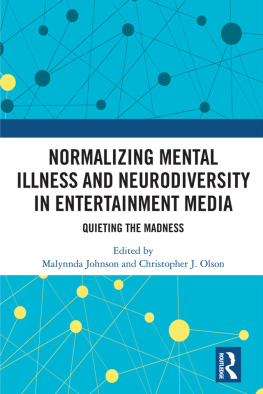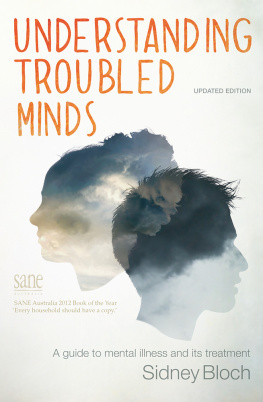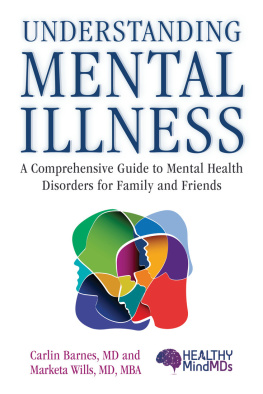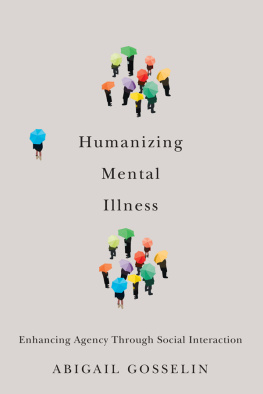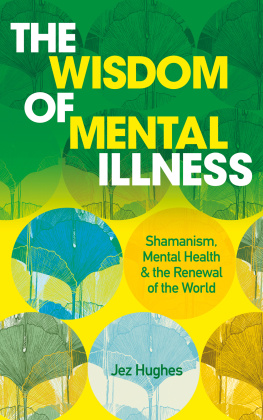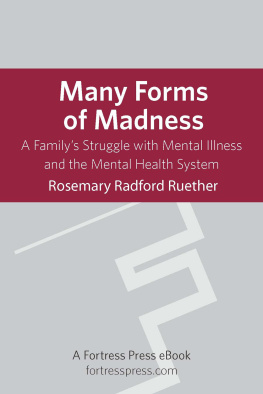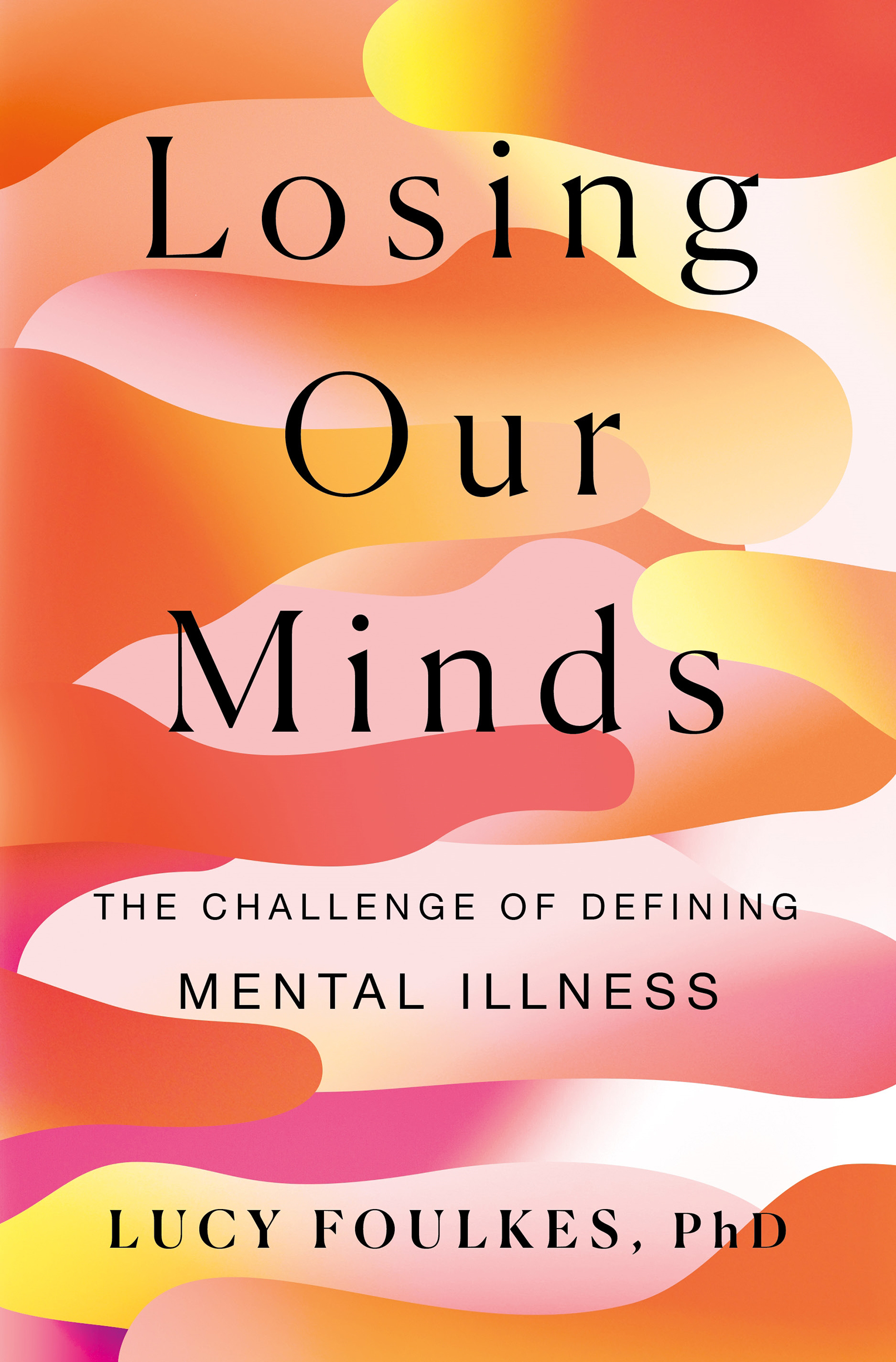Contents
Guide
Pagebreaks of the print version

The author and publisher have provided this e-book to you for your personal use only. You may not make this e-book publicly available in any way. Copyright infringement is against the law. If you believe the copy of this e-book you are reading infringes on the authors copyright, please notify the publisher at: us.macmillanusa.com/piracy.
There is no uncontroversial language when talking about mental illnessand that includes the phrase mental illness.
Nathan Filer
When it comes to matters of human distress, some people argue that the labels of illness or disorder are unhelpful, and I am entirely sympathetic to this view. The concern is that these terms are stigmatizing and medicalizing, implying entirely internal causes or personal fault whenas we will seeso many of these symptoms are an understandable response to suffering and hardship brought on by stressful lives. But alongside this, I also believe that some psychological experiences are so distressing and disabling that the labels of illness and disorder can be useful and necessary. I therefore use these terms, cautiously, throughout this book. But I recognize that this language, like all language on this topic, is imperfectand I talk about that quite a bit, too.
Let me paint a picture of an idyllic life. Its my life, in fact, when I was twenty, in the summer after my second year at college. I was studying psychology, which I found fascinating. I had just started going out with my boyfriend, another student, and I was falling in love. I had a great summer job as a swimming teacher; I was close to my parents and my brother; I had a lovely bunch of friends both at the university and at home. From the outside, my life that summer was incredibly easy, hopeful. But on the inside, I was unraveling.
I was in Turkey when everything came undone, on the first night of a weeklong vacation with my three best friends. The problem had been brewing for a whileI had been feeling low for monthsbut on that vacation a switch flicked in my head, and I suddenly became much, much worse. Walking back to our apartment after a day at the beach, seemingly out of nowhere, I began to feel like I couldnt breathe. My thoughts became dark and opaque. We found a doctor, and he said to mein broken English, perplexedWhy you crying? Youre on holiday. He injected me with Valium, my friend beside me holding my hand. I flew home the following day, hoping vaguely that when I got home somehow everything would be okay. I was wrong. That summer was the start of months, of years, of my experience of mental illness.
When I walked into my kitchen after the flight, I had a strong sense that the room was unfamiliar. I knew objectively I was in my own house, but at the same time, it felt like Id never been there before. (I later learned this is called derealization, or jamais vunever seena sinister sister to the more common dj vu.) It cloaked me like a cloud, a creeping, awful feeling, and I realized something serious was happening to me.
My dad took me to an after-hours clinic in a local hospital where I was prescribed more Valium, and then to a GP the following day, who gave me antidepressants. After the longest, darkest month of my life, I went back to the university for my final year. I wasnt ready to go back, but I was too scared of the alternative: a year at home without distraction. At college I was a ghost in my own life: scared to be on my own, not sleeping, crying on campus and on trains.
It took about four months before I felt a glimmer of something that wasnt depression or anxiety, and about three years until I believed that those feelings wouldnt dominate my life. Over the years, Ive seen many therapists and I also took medication on and off for about five years. I am much, much better now, and have periods where this all feels like a distant memory. But as anyone with similar experience will know: it lives with you.
But this book is not about me. There are plenty of excellent memoirs out there depicting what mental illness feels like, many of them by people who have suffered far more than I have. Instead, this book is about whats been happening around me: in the research world and in society at large. After I finished my degreeI did get there in the endI decided to stay in academia, and I now have a PhD in psychology. I now work as an academic psychologist, researching mental illness full-time, working with some of the most innovative mental health researchers in the world. This book is partly about this academic knowledge: mental illness is a fascinating, intricate, messy area of science, and there are so many stories about this research that need to be told. But something else has happened since I was first unwell, something in society, and the book is about that, too.
When it happened to me in 2008, no one talked about mental illness. The doctors and psychologists I saw told me it was very common, that they saw lots of patients with depression and anxiety, especially young people like me. When I looked around me, though, at society, at my peers, I saw nothing. There were some books, a few websites, but no presence, no public conversation. Professionals telling me that I wasnt alone was irrelevant, because everywhere I turned, in every practical respect, it felt like I was. However, this public silence was about to change. I didnt know it then, but my experience happened around the time of a significant cultural shift.
CAMPAIGN TO DESTIGMATIZE MENTAL ILLNESS
It started in 2007, with a campaign called Time to Change, whose goal was to end mental health discrimination and stigma. Their mission began quietly, but in 2011, they launched a national campaign, with four weeks of television advertisements and the following tagline: Its time to talk. Its Time to Change. Celebrities like Stephen Fry and Ruby Wax were involved, discussing their own mental illnesses. The campaigns flagship statisticthat one in four adults will experience a mental illness in any given yearstarted appearing widely. I clearly remember reading a Time to Change leaflet around then. I was working as a research assistant after my degree, and I used to go to secondary schools and ask teenage participants to complete a series of cognitive tasks on laptops. While waiting for one of them to finish, in an upstairs room of a maze-like old school, I started reading some of the health information on a noticeboard. One of the leaflets, bubblegum pink, was about the Time to Change campaign. I remember being struck by the one-in-four statistic and the celebrity stories, realizing there really were other people out there like me.
This campaign was a cultural turning point. From there, the momentum started to grow, a rumble in the background at first, gradually growing louder. More celebrities started admitting that they too had mental health problemsDavina McCall, Emma Stone, Lady Gaga. Famous and non-famous people alike started writing memoirs; discussions of mental illness in the media exploded. People were getting trained in mental health awareness at work, children were learning about it in schools. Even the royal family got involved, with princes William and Harry encouraging us to open up when were struggling. Now, we have Mental Illness Awareness Week every October, including World Mental Health Day on October 10. If that campaign was to get people talking about mental illness, then it worked: people are talking about it all right.


